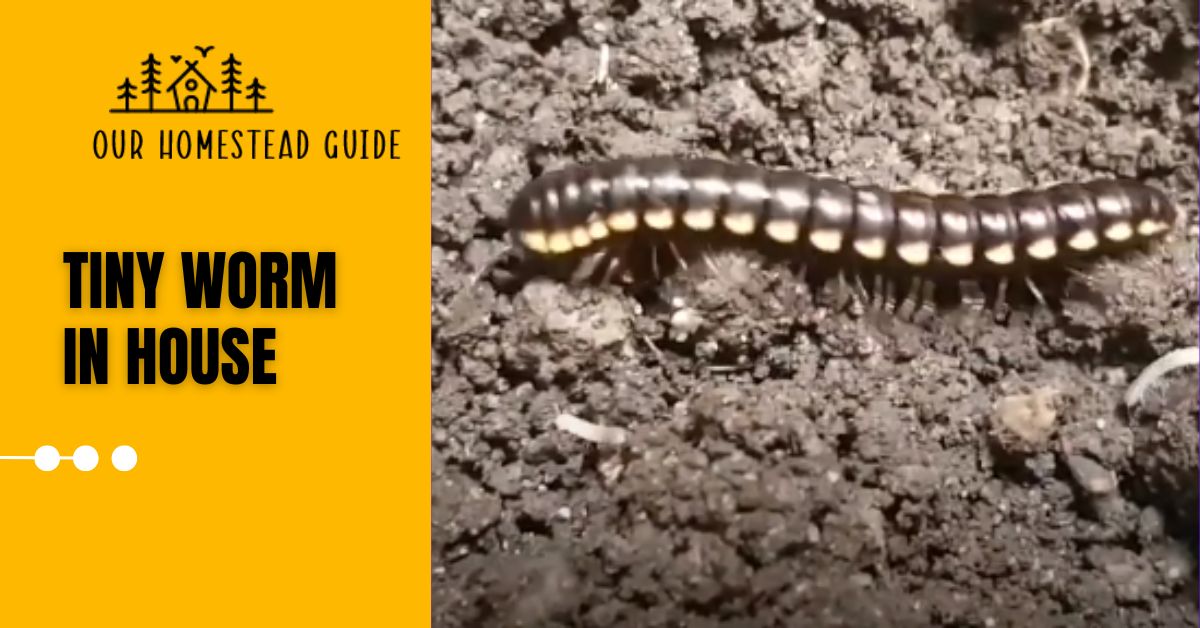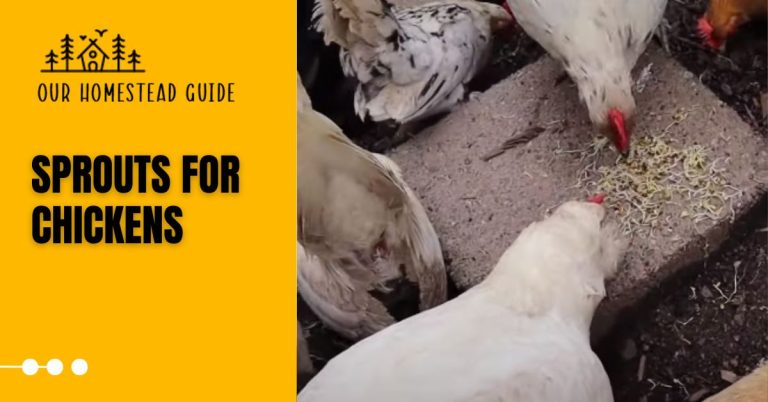How Do I Get Rid of These Tiny Worm in House
A Tiny Worm in House, resembling a faint beige whisper against the wood, was cautiously making its way into the unknown by nestling close to the wet crevice. Its tiny, nearly undetectable legs drove it along, its surroundings a maze of scattered crumbs and dust mites.
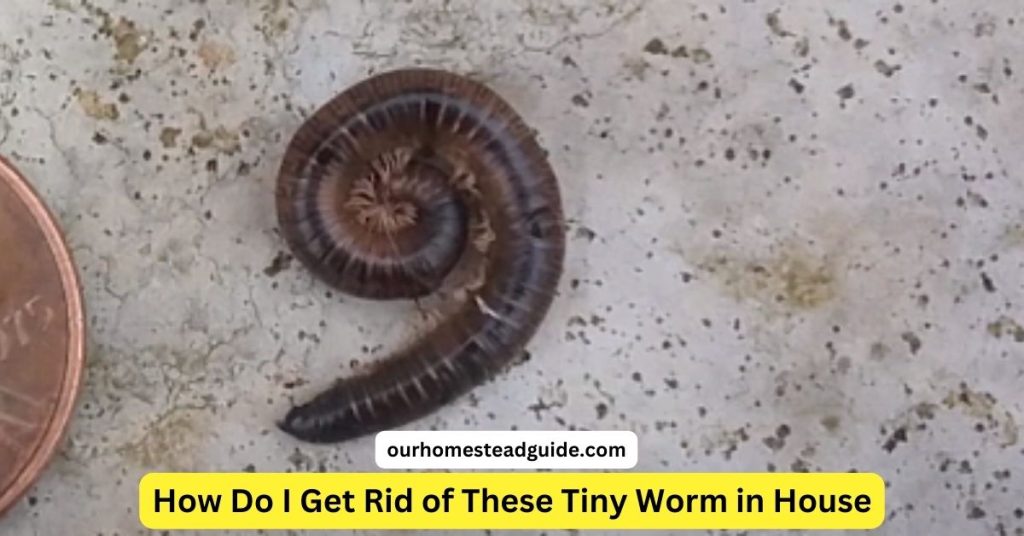
The worm was both monarch and explorer in this secret country, its destiny a mystery that revealed itself with every subtle curve of its body.
Tiny Worm in House Overview
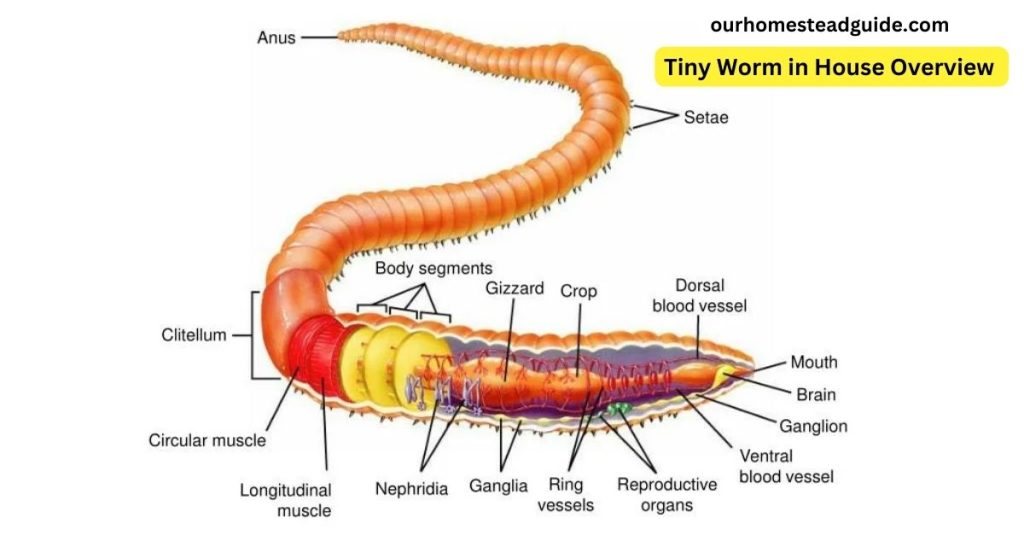
| Aspect | Details |
|---|---|
| Creature: | Tiny worm (species depends on your location) |
| Size: | Thread-thin, barely visible to the naked eye |
| Color: | Pale beige, translucent in some light |
| Habitat: | Damp cracks in floorboards, behind baseboards, near sources of moisture and organic matter |
| Diet: | Microscopic fungi, decaying plant matter, dust mites |
| Lifespan: | 2-6 months, depending on species and conditions |
| Benefits: | Helps decompose organic matter, contributes to healthy soil (if it ends up outside) |
| Harms: | None to humans or pets |
| Precautions: | If concerned about allergies or hygiene, avoid direct contact and keep living areas clean and dry |
| Fun fact: | Some tiny worms can regenerate lost body parts! |
What is The Tiny Worm in House?
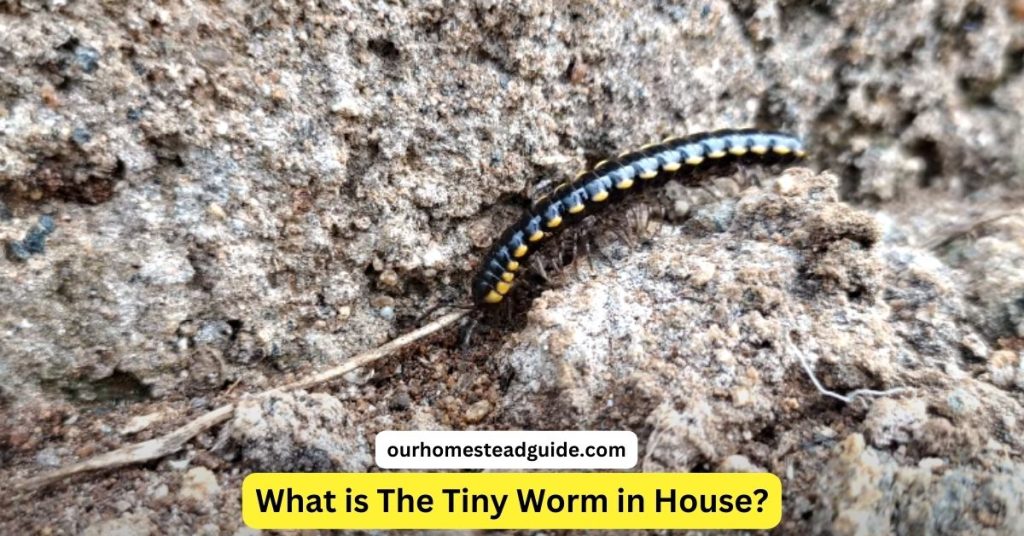
Identify the Insects:
Verify that Gerry’s sunroom contains millipedes by examining the description, which includes the fact that the small worms coil up when touched, have rough outer skin, and release a powerful stench when they die.
Understand the Millipedes’ Habitat:
Be aware that millipedes are typically found in regions with mulch or vegetation and that they like damp, moist environments.
Assess the Sunroom Environment:
Look around the sunroom to find any places that seem damp. Look for any wet items, standing water, or leaks that might be causing the millipede problem.
Take Measures to Reduce Moisture:
- If the sunroom is damp, take measures to lower the moisture content.
- As soon as possible, fix any leaks.
- Make sure there is enough airflow to let moisture out.
- To keep humidity levels lower, think about utilizing dehumidifiers.
Seal Entry Points:
Look for possible access sites around the sunroom’s border, since millipedes are on the ground.
Caulk can be used to seal cracks, gaps, or holes to keep millipedes out.
Use Insecticide:
- Apply a pesticide surrounding the sunroom’s external base that contains either bifenthrin or beta-cyfluthrin.
- Pay close attention to the directions on the pesticide product.
- Millipedes may be discouraged from entering the sunroom by this barrier.
Address Outdoor Vegetation:
If there is any mulch or vegetation outside the sunroom, think about moving or getting rid of it.
Reducing the places where millipedes may hide can aid in managing their number, as they frequently do so under such materials.
Natural Solutions:
Think of non-chemical solutions, like picking up millipedes by hand and putting them back outside. To control their numbers, this can be done regularly.
Encourage Natural Predators:
Permit access to the region for birds and other natural predators. By feeding on them, they could contribute to the population management of millipedes.
Monitor and Repeat if Necessary:
Keep a regular eye out for any indications of millipedes in the sunroom.
Follow these instructions again if the infestation doesn’t go away, or think about hiring a pest control company.
Types of Tiny Worms
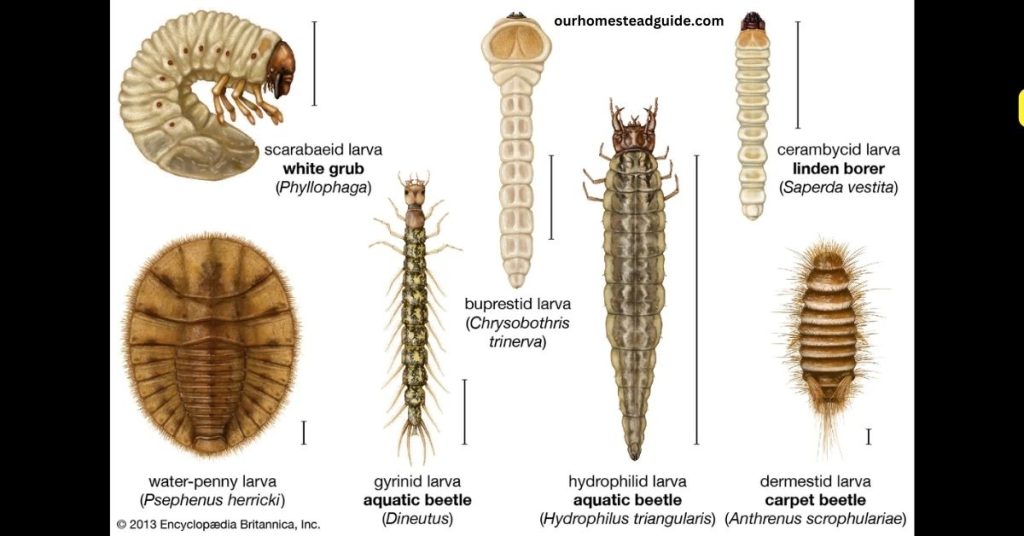
Nematodes (Roundworms):
- Caenorhabditis elegans is often utilized in scientific studies, particularly those pertaining to developmental biology and genetics.
- Trichinella spiralis: In humans and other animals, this parasite causes trichinosis.
- Ascaris lumbricoides: A common parasite that infects the human intestine.
Flatworms (Platyhelminthes):
Planarians are freshwater flatworms with a reputation for healing. Tapeworms, also known as cestodes, are parasitic flatworms that live in vertebrates’ intestines.
Annelids (Segmented Worms):
- Microscopic freshwater and terrestrial worms, including certain earthworm species, are known as microdrile oligochaetes.
Leeches:
- Hirudinea: Carnivorous or bloodsucking worms that are frequently found in watery habitats.
Threadworms (Nematodes):
- Enterobius vermicularis: Often referred to as pinworm infection, this organism causes enterobiasis in humans.
Rotifers:
- watery microscopic creatures that are often called “wheel animals” because of the distinctive wheel-like configuration on their heads.
Roundworms (Nematodes):
- Hookworms are parasitic nematodes that adhere to both human and animal gut walls.
- Strongyloidiasis in humans is brought on by Strongyloides stercoralis.
Springtails (Collembola):
- Hexapod creatures, small, that live in dirt and leaf litter. Since they leap, they are sometimes referred to as “springtails” even though they are not worms.
Gordian Worms (Nematomorpha):
- worms parasitic that grow within insects and exude long, thread-like larvae.
Why are there worms on my kitchen ceiling?
Thus, the “worms” you see on the ceiling of your kitchen are moth larvae. Why are they up there, though? The fully formed larvae you observe crawling around your kitchen are seeking a secure spot to pupate to reach adulthood.
They crawl upward to become moths, frequently landing in the cracks in walls and ceilings to form their cocoon. Since their primary food sources are dead bugs and old spider webs, they must climb to great altitudes.
Indian cuisine Moth larvae prefer warm, muggy weather. Kitchens are ideal places to live since they constantly bring in heat and moisture. Heat and moisture will rise and find a cozy home in your kitchen ceiling.
Sadly, though, the larvae won’t simply remain on the ceiling. These tiny, nearly invisible insects might enter your pantry via your roof. Completely developed larvae deposit their eggs in your food storage and infest cereal boxes, pasta, grain, nut, pet food, tea, and other dried goods containers. It is best to throw away any contaminated food that has been exposed to an infection.
How do I get rid of moth larvae on my ceiling?
You must act quickly if you see little white worms on your kitchen ceiling since they can multiply in three weeks and spread throughout the rest of your pantry.
The following advice can help you get rid of these pests:
Check your food
Firstly, acquire a garbage bag. Next, go through your pantry and inspect everything, new and old. Examine the wrinkles of the packaging; larvae may be lurking there. After that, throw away any items you don’t often use as well as any boxes or bags that have expired or have been sitting at the back of the shelf for a while.
Remember that these worms may infiltrate unopened packaging and even canned foods, so be sure to check those as well. Next, take off any ripped or peeling shelf liners and replace them. Once everything that has to be disposed of is in the trash bag, leave your house quickly! Don’t keep the bag in your basement or garage while you wait for the next garbage collection day.
Furthermore, please do not pour anything into your wormery or compost! As soon as possible, take them to the dumpsters located distance from your home.
Deep clean your pantry
Make your pantry as clean as it’s ever been! Empty your storage first. After that, vacuum your racks or cabinets to get rid of any dirt. Use a sponge dipped in soap to thoroughly clean your pantry. Remove any detachable shelves you may have and give them a thorough cleaning. It’s possible that those tiny white worms got stuck underneath the wood.
Even without detachable slats, make sure a soapy solution gets to every area where the shelves and walls touch. Before washing and allowing the cabinets to dry, repeat this procedure. Following these procedures, give your floors and pantry surfaces a thorough cleaning.
Set up traps
Male moths are drawn to pheromone traps by their aroma, which confines them and prevents them from fertilizing female moths. These traps may be found in hardware, gardening, and home supply stores as well as on the internet. Put them in places where you’ve noticed pest activity or where you wish to keep high-risk objects safe.
Invest in plastic containers (optional)
Invest in some watertight plastic storage boxes of the highest caliber. Pour water into it, close the top, turn it upside down, and give it a shake to see how good it is. You have located a trustworthy storage box if there is no water leakage. Avoid using the container if there is even the smallest opening since the larvae can enter through it.
Where to get more help with worms on your kitchen ceiling
Because moth infestations grow quickly, they may become expensive problems if left ignored. The worms proliferate swiftly and can colonize practically any area. Therefore, be sure to take immediate action and adhere to the following instructions if you see little white worms on your kitchen ceiling or anywhere else in your home.
However, get in touch with the most respected pest control service company in your region if the issue continues and becomes worse. These experts can treat shelves and other locations where new larvae could develop since they have the necessary tools, knowledge, and expertise.
Conclusion:
Tiny Worm in House a variety of environmental elements, hygienic conditions, and individual worm species can cause little worms to develop in the house. Determining the kind of worm is crucial to assess its possible advantages or hazards. Certain worms, like parasites, can be harmful to human health, whereas other worms could be benign or even good for the environment.
Reducing the number of undesirable worms may be facilitated by keeping things clean, using good sanitation, and taking care of underlying problems like moisture. To maintain a safe and pleasant living environment, speaking with pest control specialists or experts is advised if the problem continues or causes worries.
Most Frequently Asked Questions!
Q1: What are these tiny worms I found in my house?
These could be millipedes based on the description given. Millipedes are hard-shelled, segmented, microscopic organisms. When they die, they release a strong stench and frequently curl up when touched.
Q2: Why do I have these tiny worms in my house?
Conditions that are wet and humid attract millipedes. They could come inside your home in search of a place to hide and a comfortable atmosphere. Leaks, moist surroundings, and wet places are typical contributing causes.
Q3: How can I identify millipedes in my house?
Typically, millipedes are cylindrical, tiny, and have several body segments. They might have a strong exoskeleton and be darkly pigmented. They tend to coil up when disturbed.
Q4: How do I get rid of these tiny worms?
When dealing with a millipede infestation, you ought to:
- Determine the sources of any moisture or humidity and remove them.
- Cover the foundation, windows, and door openings with sealants.
- Around the perimeter, apply pesticides that include bifenthrin or beta-cyfluthrin.
- Think about clearing mulch or plants from areas where millipedes may hide outside.
- Promote avian predators, such as birds.
Q5: Are millipedes harmful?
In general, millipedes pose little threat to people. But when they are around in big quantities, they may be an annoyance. They are not directly dangerous, but if they are crushed or disturbed, they may release an unpleasant smell.
Q6: Can I use natural methods to control millipedes?
Indeed, you may physically remove and release millipedes outside. Effective natural strategies also include lowering moisture content and promoting natural predators.
Q7: How can I prevent millipedes from coming back?
Keeping an area dry is essential to preventing millipede infestations. Seal access points, make sure there is enough ventilation, and quickly fix leaks. Keep an eye out for wet conditions and take preventative action as necessary.
Q8: Should I seek professional pest control help?
See a professional pest control provider for advice if your attempts prove futile or if the infestation is severe. They can evaluate the circumstances and offer focused solutions.
Q9: Can millipedes cause damage to my house?
It is unknown if millipedes may harm a home’s structural integrity. Their existence, nevertheless, can be a sign of underlying moisture problems that can trigger additional difficulties.
Q10: Is it necessary to use pesticides, or are there eco-friendly options?
Even while chemical pesticides work well, you may also look at more environmentally friendly choices like natural repellents or diatomaceous earth. Furthermore, keeping the environment dry is still an essential eco-friendly precaution.

